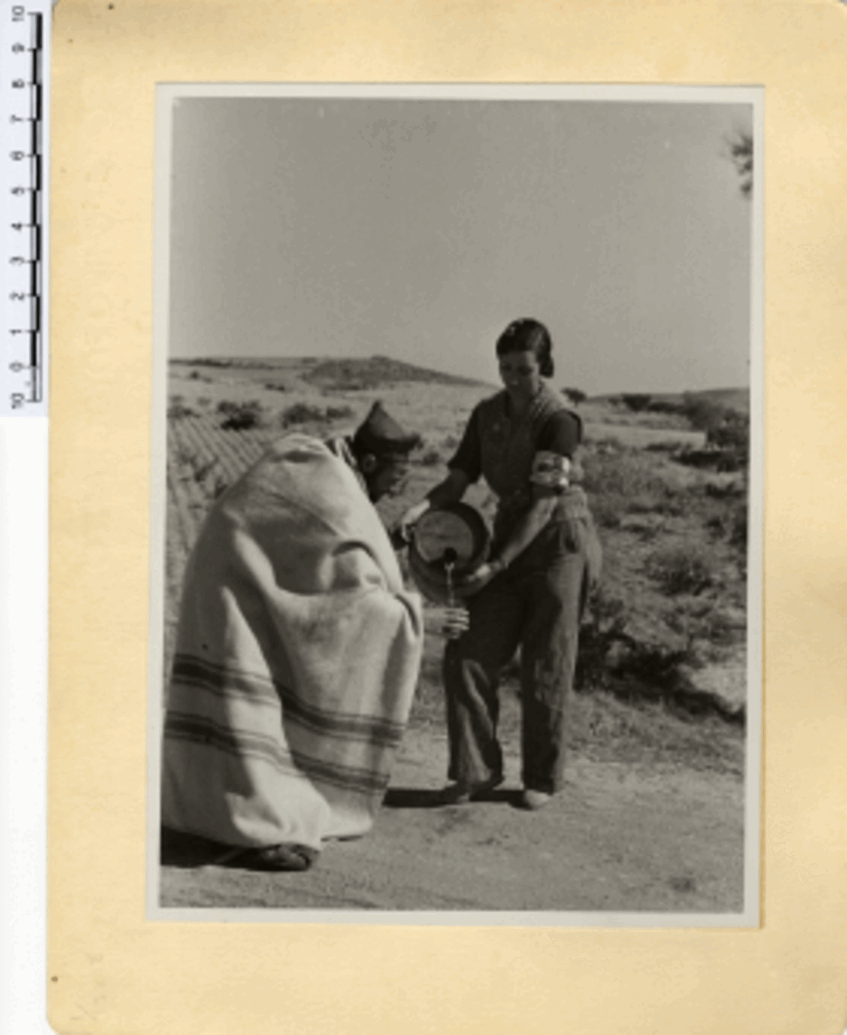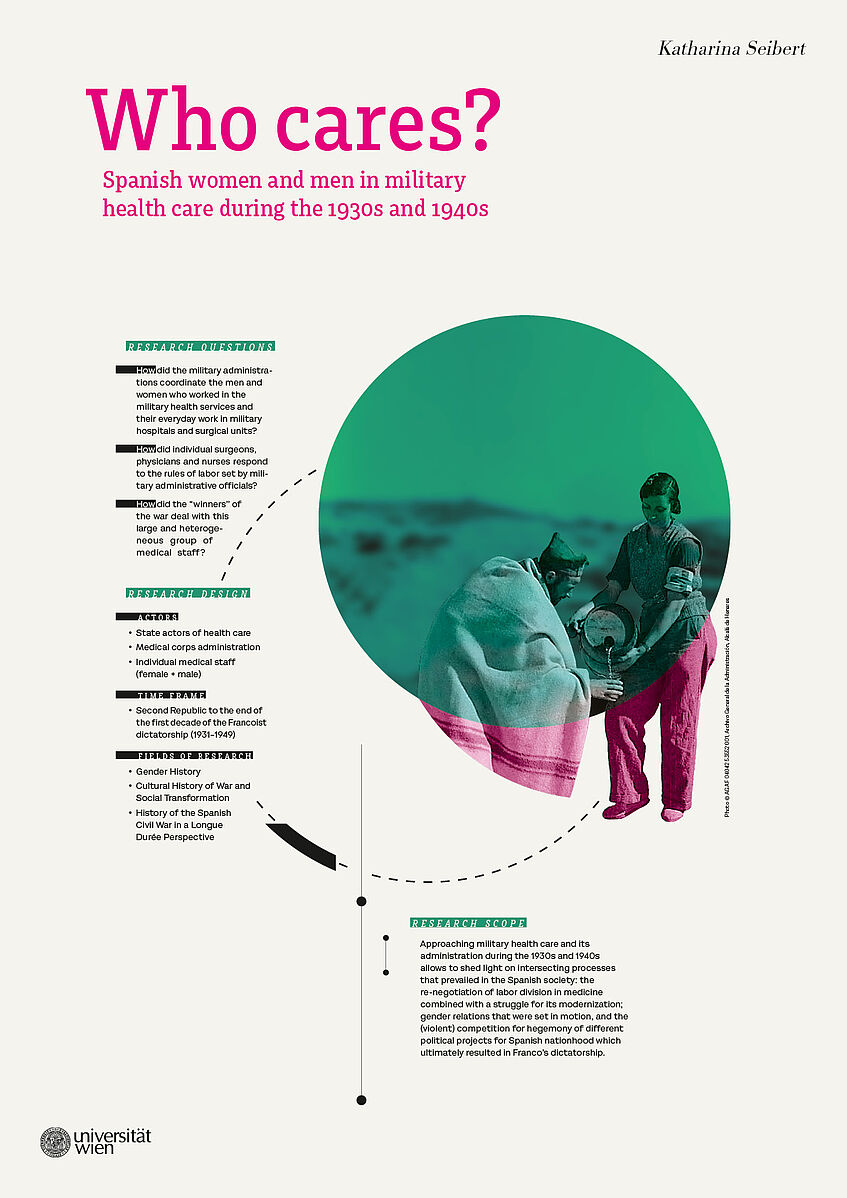Who cares? Spanish women and men in military health care during the 1930s and 1940s
Who cares? Spanish women and men in military health care during the 1930s and 1940s
(working title)
Betreuerin: Univ.-Prof.in Mag.a Dr.in Claudia Kraft
Bearbeiterin: Katharina Seibert, MA
Finanzierung: Uni:docs Förderprogramm der Universität Wien
Laufzeit: 2019-2022
How did the military administrations organize a general mobilization of staff for health care duty? How did they coordinate these men and women and their everyday work in military hospitals, field hospitals and mobile surgical units at the front lines? And how did the “winners” of the war deal with this large group of mobilized and newly trained personnel? These are three of the research questions that guide my PhD project.
The 1930s and 1940s constituted a decisive period in Spanish contemporary history, in general, and its health care history, in particular. The proclamation of the Second Republic on April 14th, 1931 was followed by an ambitious reform project that included changes in health care. However, only when the civil war began and the numbers of combatant and civilian casualties rose quickly, former pattern of labor division were ultimately challenged. Until then, health care was provided by surgeons and physicians, aided by practitioners and religious care givers, as in, nuns and monks. To cover the exorbitant demand for professional medical staff, both belligerent parties then had to mobilize and train an unprecedented number of personnel and to create a coordination system for these newly recruited people.
Approaching military health care and its administration during the Second Republic, the civil war and the first decade of the Francoist dictatorship from a gender historian’s perspective allows to shed light on the following intersecting processes that prevailed in the Spanish society: the re-negotiation of labor division in medicine and health care which combined with a struggle for modernization of the field in general; gender relations that were set in motion; and the – at times very bloody and violent – competition for hegemony of different political projects for Spanish nationhood which would ultimately result in a dictatorship. The civil war, therefore, will be considered as only one part of a larger social process.
Although the Spanish case differed in many aspects from the trajectories of its European neighbors, there were many similarities, too, which now add to rethink European history of the interwar period and World War II.


